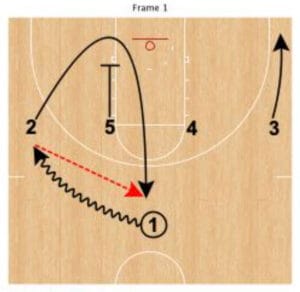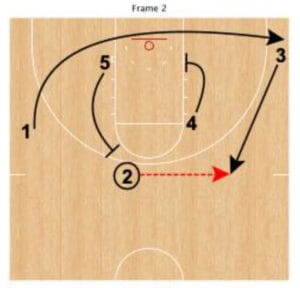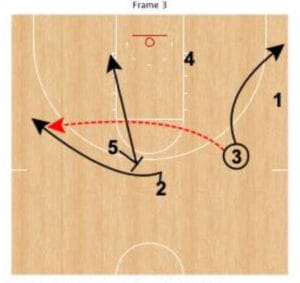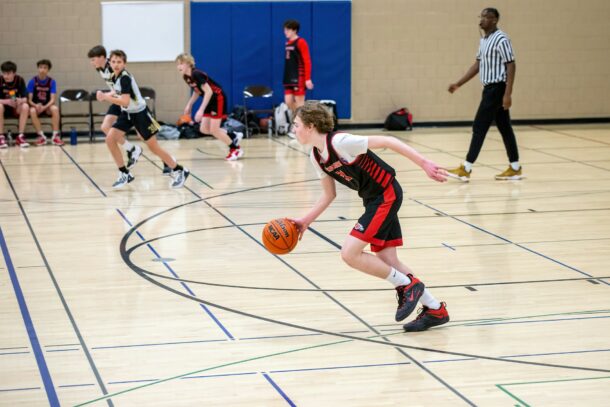As a seasoned basketball coach with years of experience on the court, I firmly believe in the power of precise execution during critical moments. The end of each quarter presents a golden opportunity to make a significant impact on the game’s momentum, and that’s where this “End-of-Quarter Quick Hitter” comes into play.
In this post, I’ll be sharing valuable insights into this strategic offensive play, tailored specifically for youth basketball teams. Mastering the art of the end-of-quarter quick hitter can give your team the edge they need to finish quarters on a high note, gain momentum, and seize control of the game. So, let’s dive into the intricacies of this tactical gem and empower your young athletes with a game-changing tool that will elevate their performance to new heights.
End-of-Quarter Quick Hitter
 This play begins with using the 1-4 High set.
This play begins with using the 1-4 High set.
1 starts with a dribble entry to the wing. As 1 makes his way to the wing, 2 imitates a zipper or loop cut.
2 cuts down and loops around 5, who provides the down screen.
As that action is taking place, 3 cuts to the corner as a decoy action.
This initial action might get an open look for 2 at the top of the key.
Any defensive overplay might result in a dump down pass to 5 for a layup.

3 pops up from the corner to receive a pass on the wing.
1, meanwhile, cuts from the opposite wing to the strong side corner. He cuts along the baseline, receiving a screen from 4 at the block to free him.
2 reverses the ball to 3 on the wing. Once that pass has happened, 5 provides a flare screen for 2.
This action might get an open shot for 3. It might also get an open shot for 1 in the corner, or 4 on the block.

The final sequence of this play sees 3 make the decisions. He might be open, or 1 in the corner, or 4 on the block.
3 can also skip pass to 2, whose flair screen might see him open on the opposite side. Depending on how the defense plays it, 5 might slip the screen for an open layup as well.
The value of a play like this one remains the pressure-release aspect. If a defense overplays or denies certain passes, preventing a team from initiating a continuity offense, then a set like this one provides a useful counter attack.
Related: 7 Reasons to Practice End-of-Game Situations
Resources:
If you found this useful, don’t forget to check out additional blog posts at TeachHoops.com. Also, check out TeachHoops on Facebook, Twitter, Instagram and YouTube.








